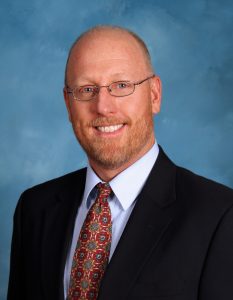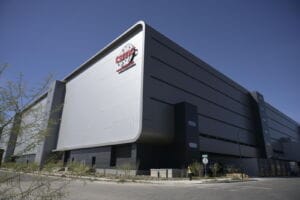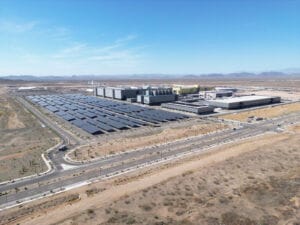As Maricopa County’s population continues to grow at full tilt, cities in the region are facing different challenges to manage and capitalize on the influx.

Two communities on opposite sides of the county, Buckeye and Tempe, are having to take quite different approaches to economic development. Buckeye is only 5 percent built out with a massive 640 square miles within its boundaries. Landlocked Tempe is nearing built-out with 40 square miles.
READ ALSO: Goodyear and Buckeye among Top 10 cities for growth in 2020
“Tempe is mainly growing up and Buckeye is growing out with very different issues,” said Cheryl Lombard, president and CEO of Valley Partnership, the voice of the real estate community that hosted a virtual forum last Friday to hear from both mayors. Arizona Public Service sponsored the event.
Both cities are models of responsible growth
With the pandemic still impacting communities and Californians and residents of other states moving here, both cities are models of “responsible development and responsible growth,” Lombard said.

“Even though these communities are 45 miles apart, these mayors and councils are doing a great job on continuing what growth and what opportunity exists in their communities,” she said.
About 200 attendees tuned in to listen as Buckeye Mayor Eric Orsborn and Tempe Mayor Corey Woods talked about their unique challenges and what the future holds.
Here’s what they had to say:
Buckeye: could rival Phoenix in population one day
Buckeye’s biggest challenge is keeping up with explosive growth, Mayor Orsborn said.
For 20 years it has been spreading like wildfire, topping national lists year after year for its percentage growth increase Currently, Buckeye is the second fastest growing city in the U.S., according to the U.S. Census Bureau.
It is also one of the largest in terms of land mass, stretching nearly to Wickenburg on the north and to Gila Bend on the south. In comparison, Phoenix encompasses 517 square miles.
“Growth and Buckeye are synonymous and that will continue to be so for decades to come,” Orsborn said.
Currently, Buckeye has almost 100,000 residents. By 2040, it’s predicted to reach 300,000. At ultimate buildout, it could house 1.5 million residents.

Monster master planned communities rising up
Most of the development in Buckeye has been housing. Single family homes, largely in large master planned developments have been cropping up. Communities like Douglas Ranch, Sundance, Tartesso, and Festival Ranch are under construction or breaking ground soon.
Douglas Ranch alone is 53 square miles — a little larger than Phoenix. At buildout, it will be home to about 300,000 residents with an economic impact of around $60 billion.
Commercial and industry are arriving, including logistics and distribution centers that have easy access to freeway interchanges heading in all directions, the CANAMEX Corridor, and Buckeye Municipal Airport. Companies like Walmart, Cardinal IG and Five Below. Other businesses and schools are coming in like Wells Fargo, Chase Bank, Banner Health, and Great Hearts Academies.
More businesses needed to serve population, create jobs
With the housing boom, the biggest challenge is keeping up, Orsborn said. Water infrastructure, water resources, transportation infrastructure, and city services like fire and police are top priorities.
The city also needs more business to serve the burgeoning population. When compared to other cities, Buckeye has about a third of the retail per capita. Healthcare, education, grocery stores, sitdown restaurants, and retail are lacking.
Industry is needed to create jobs for local residents, Orsborn said.
“Ninety percent of our residents currently leave the Buckeye area and travel east on I-10 to jobs outside of Buckeye. We’re looking for opportunities for people to work in the community they live in.”
Meanwhile, with so much empty land, the city has the opportunity to grow the best it can be, he said.
Tempe: city on the lake focused on workforce housing, mobility hubs
In contrast, Tempe relies on a large commuter population coming into the city to work, attend Arizona State University, or visit amenities like Tempe Town Lake, said Mayor Woods.

Home to 54 million square feet of industrial and office space, Tempe is a net importer of jobs with top research firms, Fortune 500 companies and startups. Companies like Carvana, Norton, State Farm, Honeywell and Wells Fargo.
While about 190,000 residents live within the city, the average number of people in the city on any given day is 320,000 with the influx, Woods said. With the economy reliant on incoming people, bringing them back after the pandemic is essential.
“First and foremost our economic development priority is getting employers, employees, residents and visitors feeling safe and getting them ready to come back to work and play.”
Mobility hubs make getting around easier for workers, residents
Another key goal is to reduce traffic congestion and make travel within the city easier for residents and commuters, Woods said.
“The ability to track and expand business is to make it as accessible as possible for employees to live and travel to their workplace,” he said.
In that vein, Tempe is working to create a new system of mobility hubs where people can connect to multiple modes of transportation including transit to get to work, amenities or attractions. Hubs provide residents and visitors with more options besides single occupancy driving. A hub can span one, two, or few miles to provide on-demand travel choice for short trips around a community.
Workforce housing to attract employees is coming
Affordable workforce housing is another priority. An initiative, Hometown for All, was launched by Woods last year to accelerate housing affordability to create the next generation of affordable and workforce housing opportunities in Tempe.
The fund already has $1.5 million and the city is working to buy and build its own affordable and workforce housing options. Funds are also being used to provide incentives for developers to build affordable housing, he said.
“Accessible affordable housing and ease of mobility really are strategies that are key to growing our economy and sustaining the living, walkable and driving city that I and the entire city council see as our collective future.”
This story was originally published at Chamber Business News.



